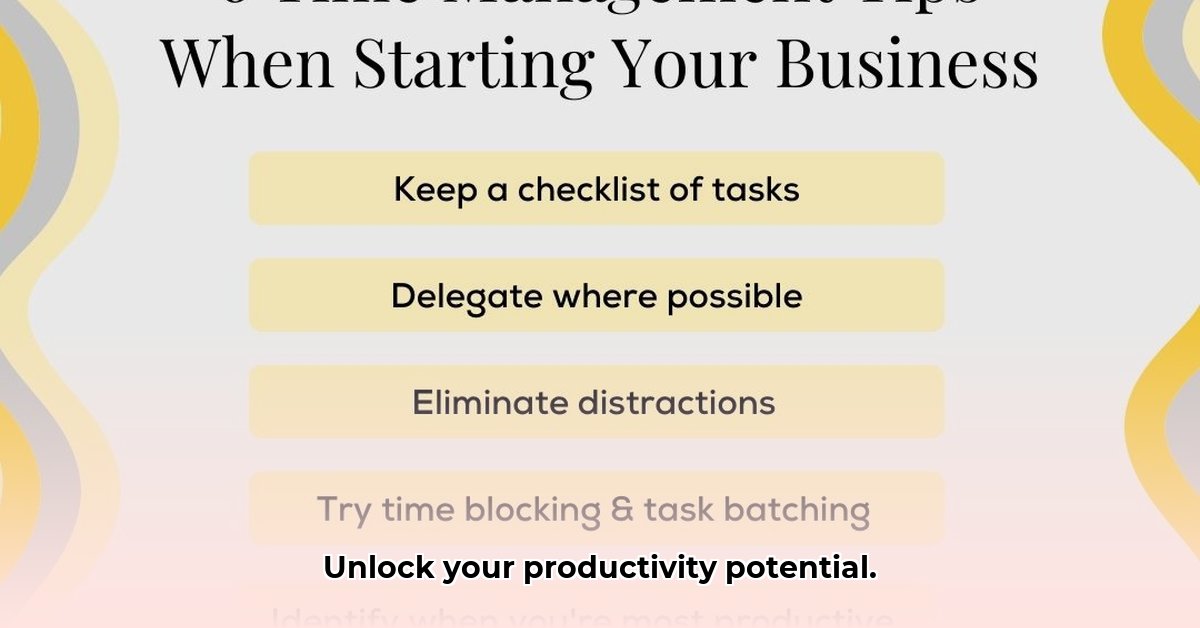Drowning in tasks and wishing for more hours? This guide provides simple, effective time management strategies to help you regain control of your schedule and enhance your productivity. It’s about mastering skills, not gaining superpowers!
Understanding Your Time & Setting Priorities
To effectively manage your time, it’s crucial to understand how you’re currently spending it. A personal time audit is the first step to reveal your time-wasting habits.
Conduct a Personal Time Audit
Tracking your activities for a week can reveal surprising insights into where your time actually goes. Be honest, even those short social media breaks count! Identifying these “time-suckers” is the first step towards reclaiming your schedule. Note when you are most productive in the morning or evening. Understanding your natural work rhythms is key to creating a schedule that suits you. Use time-tracking apps like Toggl Track or RescueTime for automated tracking and detailed reports.
Core Time Management Strategies to Improve Focus
Effective time management relies on planning, prioritizing, and efficient task management.
1. Planning: Map Out Your Day
Think of your to-do list, calendar, and time blocking as your personal navigation system. Use your to-do list to record all tasks, and your calendar to visualize your schedule for better time allocation. Time blocking involves dedicating specific time slots to specific tasks, minimizing context switching and improving focus. For example, instead of just noting “Write report” on your to-do list, allocate two hours specifically for writing that report. Consider using a digital calendar that sends reminders.
2. Prioritization: Master the Art of the Crucial
Focus on what’s most important using methods like the Eisenhower Matrix (Urgent/Important), the ABCDE method (A = must do), or the MoSCoW method (Must have, Should have, Could have, Won’t have this time). Experiment to find the method that aligns best with your thinking style. For the ABCDE method, assign “A” to high-priority tasks with significant consequences, “B” to tasks that should be done, “C” to tasks that are nice to do, “D” to tasks you can delegate, and “E” to tasks you can eliminate.
3. Task Management: Break Down Large Tasks
Large tasks can feel overwhelming. Break them down into smaller, more manageable steps. Instead of “finish project X,” your to-do list might read “Research project X,” “Outline project X,” and “Draft section one of project X.” This approach makes the overall goal less intimidating. You can also use the pomodoro technique that involves using short bursts of focused work (typically 25 minutes) followed by short breaks (around 5 minutes). These concentrated intervals help to maintain concentration and prevent burnout. Consider slightly longer breaks if needed.
Tailoring Time Management to Your Style
Remember, there’s no one-size-fits-all solution. The key lies in experimenting with different techniques and adapting them to fit your personality and workflow. Flexibility is your secret weapon. Introverts might benefit from longer periods of focused work, while extroverts may thrive with more frequent interactions and collaborative tasks.
Technology: A Powerful Ally
Technology can be a powerful tool for time management, but also a distraction. Use calendar apps (like Google Calendar or Outlook) and task management tools (like Asana or Trello) to stay organized. Email management systems can also help you take control of your inbox. Limit notifications and schedule specific times for checking email. Consider using features like “Focus Mode” and email filters.
Conquering Common Challenges to Stay Focused
- Procrastination: Break down large tasks into smaller, manageable pieces to make them less daunting. Use the “two-minute rule”: if a task takes less than two minutes, do it immediately.
- Perfectionism: Aim for progress, not flawlessness. “Done is better than perfect.” Set realistic deadlines and focus on completing tasks to a satisfactory standard rather than striving for unattainable perfection.
- Difficulty Prioritizing: Use prioritizing techniques like the Eisenhower Matrix or ABCDE method. Learn to say “no” to non-essential requests and delegate tasks when possible. Evaluate the impact of each task on your overall goals.
The Journey to Better Time Management
Mastering time management is an ongoing process. Start small, evaluate regularly, and be kind to yourself. Off days happen, and time management is a skill that takes time and practice.
1. Start Small: Introduce one new technique a week and see how it fits into your routine.
2. Regularly Evaluate: Analyze which strategies worked well and which didn’t. Journaling can provide insights.
3. Be Kind to Yourself: Don’t be self-critical about setbacks. Time management is a skill that takes time to master. Remember that consistency is more important than perfection.
Effective time management is about making conscious choices about how you spend your time, focusing on what matters, and living a more fulfilling life. Start today.
Aligning Tasks to Achieve Organizational Goals
Aligning individual tasks with organizational objectives boosts productivity and reduces stress. It fosters a sense of purpose and ensures that efforts are directed towards achieving collective success.
Time Audit & Goal Setting Techniques
Assess your current time allocation and identify organizational priorities. Understand how your role contributes to the overall success. This preparation sets the stage for strategic time management. Clarify expectations with your manager.
How to Align Individual Tasks with Organizational Goals
Connecting daily tasks to the bigger picture involves treating each task as a building block contributing to the organization’s goals.
- Identify Key Results: Start with your organization’s highest-level goals (e.g., increased revenue, improved customer satisfaction) and translate them into specific, measurable Key Results (KRs). Ensure these KRs are SMART (Specific, Measurable, Achievable, Relevant, Time-bound).
- Break Down KRs into Objectives: Divide those KRs into smaller, manageable objectives. Use tools like mind maps to visualize the relationships between KRs and objectives.
- Align Personal Tasks: Map your daily tasks against the objectives and ask yourself: “Does this task move me closer to my team’s objectives, which in turn support the company’s KRs?” If not, reconsider its priority. Use a task management system that allows you to link tasks to specific organizational goals.
- Regular Review: Schedule regular reviews—weekly or bi-weekly—to ensure tasks remain aligned. During these reviews, assess progress, identify roadblocks, and adjust priorities as needed.
Strategic Time Management Technique
Prioritize high-impact tasks using the Eisenhower Matrix, delegating or eliminating low-impact activities. Remember, not all tasks are equal. Focus on the 20% of activities that yield 80% of the results, according to the Pareto Principle.
Utilizing Technology to Improve Focus
Calendar apps, task management tools, and project management software can streamline processes. However, avoid distractions from technology. Set boundaries around technology use, such as designated “no-notification” periods.
Obstacles and Refinement of Time Management
Address procrastination by breaking down tasks, and challenge perfectionism by aiming for efficient workflow. Refine your approach through experimentation. Seek feedback from colleagues and supervisors to identify areas for improvement.
Key Takeaways:
- Clearly define organizational goals.
- Track time for identifying inefficiencies.
- Prioritize based on organizational impact.
- Use technology effectively.
- Address obstacles like procrastination.
- Regularly review and adjust strategies.
- Communicate regularly with your team and manager about priorities and progress.
Time Management for Remote Teams to Increase Productivity
Remote work presents unique time management challenges, such as blurred boundaries between work and personal life, increased distractions, and communication barriers. Effective time management is crucial for maintaining productivity and well-being in a remote setting.
Key Takeaways:
- Establish clear boundaries between work and personal life.
- Leverage productivity techniques tailored to remote work.
- Foster proactive communication within remote teams.
- Individualize strategies based on personal work styles.
- Address the unique challenges of remote work (e.g., isolation, communication barriers).
- Utilize technology to enhance collaboration and efficiency.
- Continuously refine time management processes based on data and feedback.
Understanding Time & Individual Work Style: A Remote Setup
A time audit can reveal insights into time usage. Track activities to pinpoint time-wasting habits. Understanding personal work styles maximizes productivity. Consider factors like preferred work environment, optimal work hours, and communication preferences.
Planning and Prioritization for Remote Teams
Effective planning starts with to-do lists and methods like the Eisenhower Matrix.
- Step 1: List all tasks. Use a digital task management system to ensure accessibility and collaboration.
- Step 2: Categorize by urgency and importance. Involve team members in the prioritization process to foster shared understanding and accountability.
- Step 3: Schedule high-priority tasks for peak productivity times. Respect individual time zones and work-life balance when scheduling tasks and meetings.
- Step 4: Break down large tasks into smaller, manageable steps. Assign clear deadlines and responsibilities for each step.
- Step 5: Use a calendar or task management app. Ensure that all team members have access to a shared calendar to coordinate schedules and avoid conflicts.
- Step 6: Time blocking dedicates time slots. Communicate time blocks to team members to minimize interruptions during focused work periods.
Delegation frees time for higher-priority work. Clearly define roles and responsibilities within the
- Corporate Wellness Programs Cost Factors Impacting Your Company Budget - December 18, 2025
- Unpacking the Cost of Wellness Programs and Their Real Value - December 17, 2025
- How Much Do Wellness Programs Cost Businesses To Offer? - December 16, 2025
















